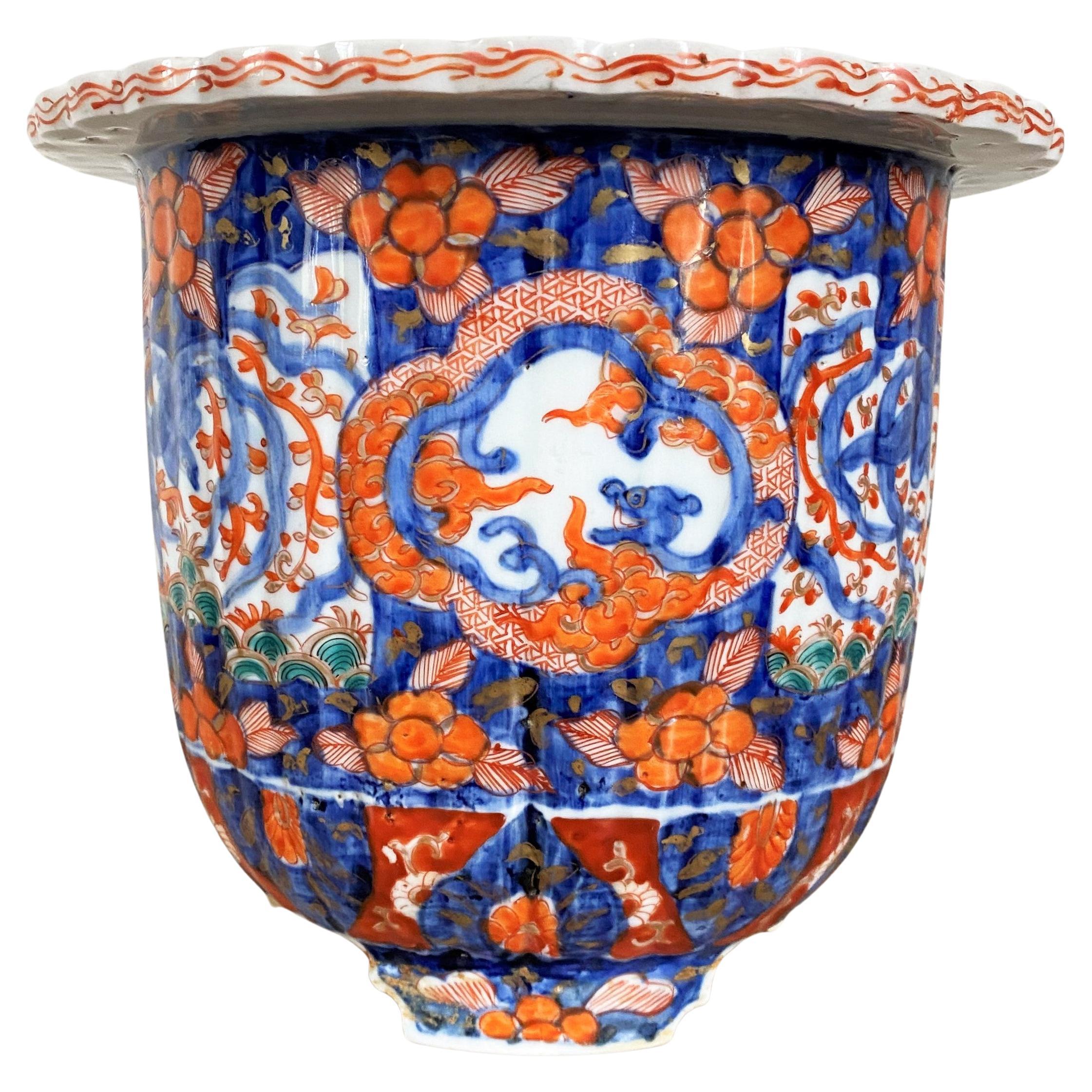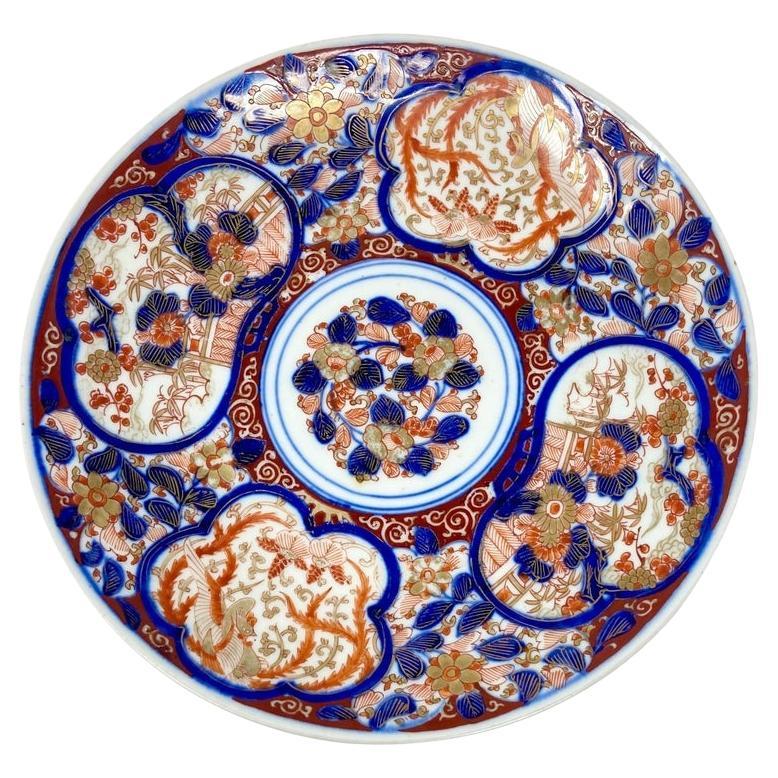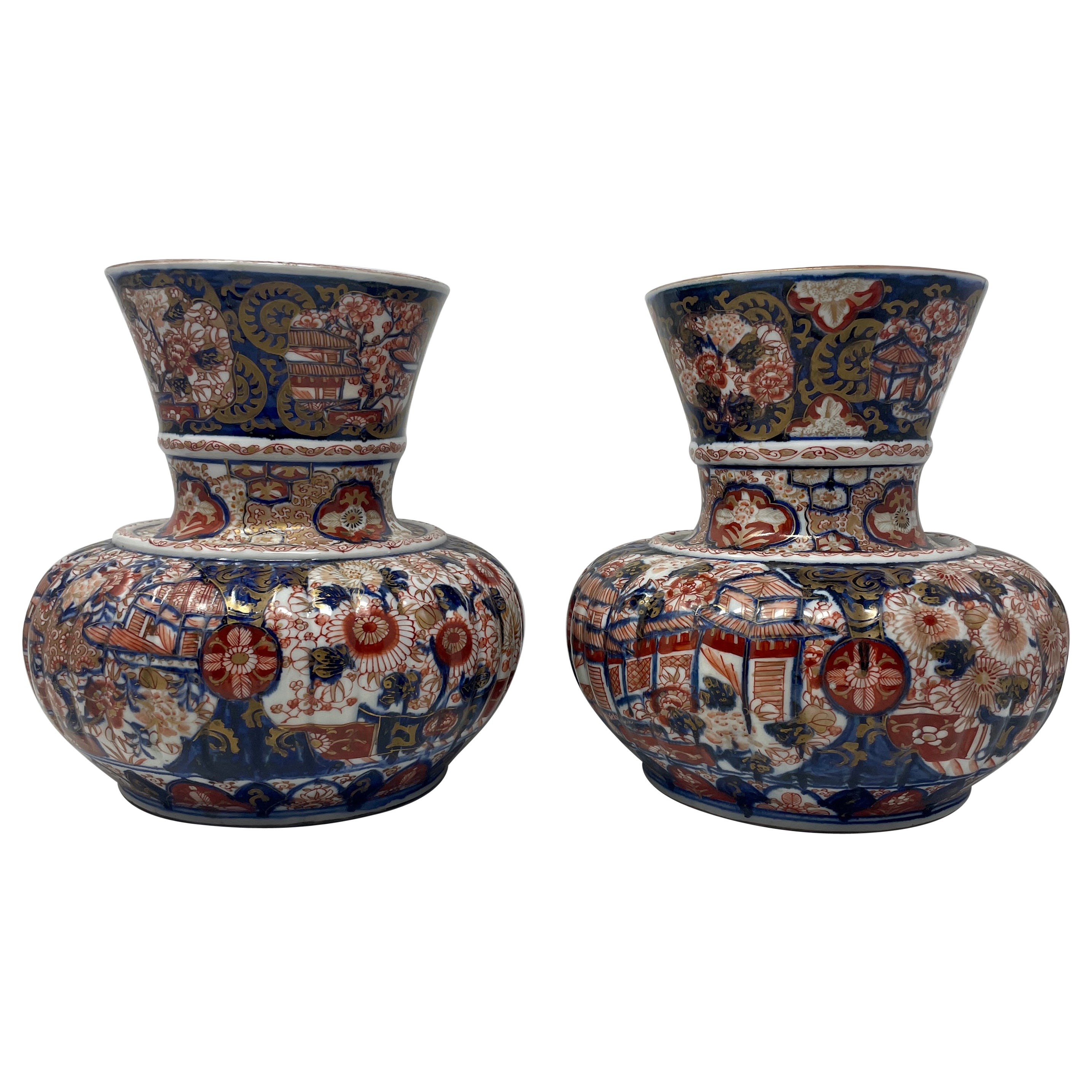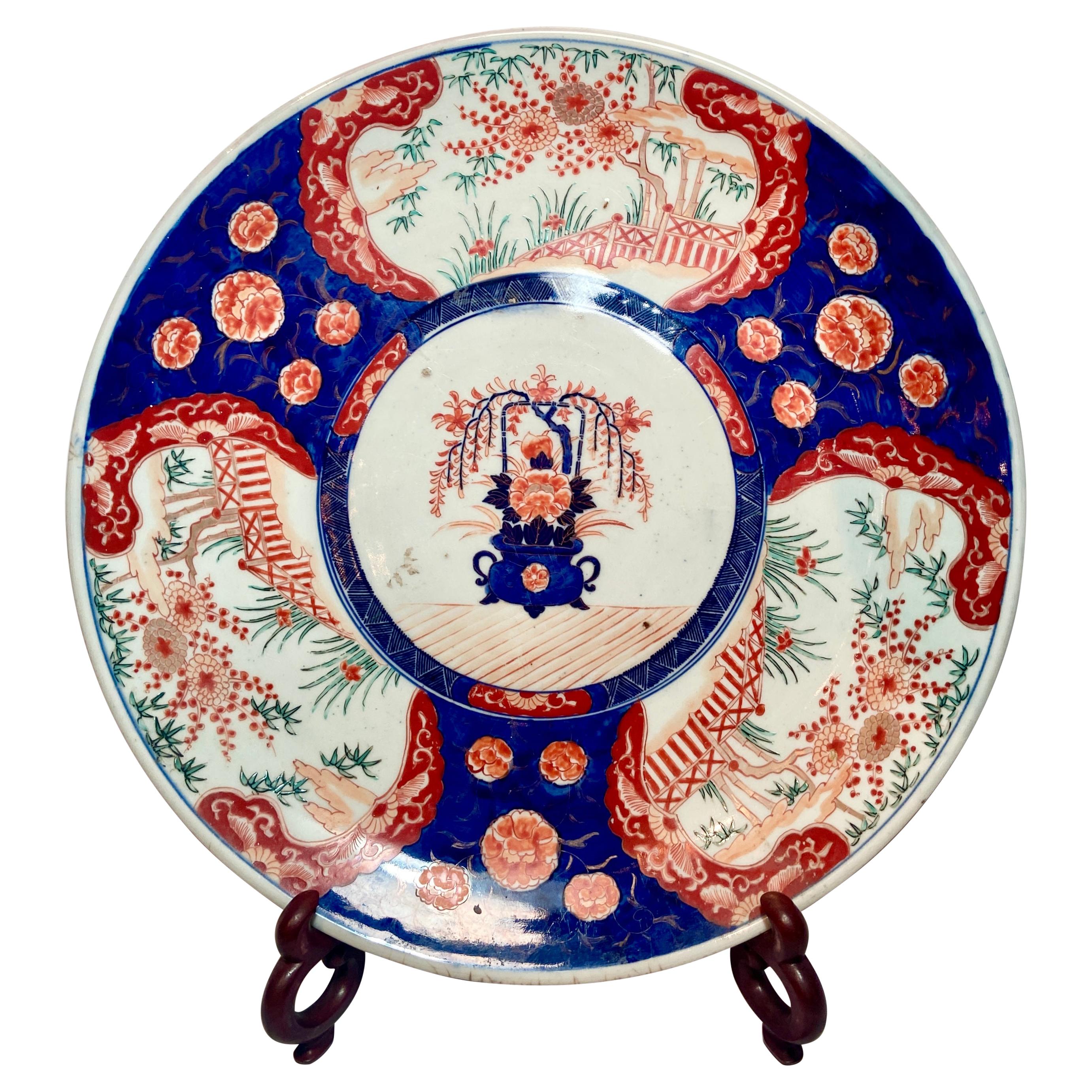Items Similar to Mounted Imari Porcelain Perfume Fountain
Want more images or videos?
Request additional images or videos from the seller
1 of 11
Mounted Imari Porcelain Perfume Fountain
About the Item
Perfume fountain in porcelain Imari kinrandé mounted in gilt bronze from the same set of porcelain. The cup and the bowl form the base, the pot covers the perfume container.
Blue under-cover decoration with gold highlights of interlacing lotus flowers. On each of the ceramic pieces, two four-lobed spaces and sides with floral motifs (pine, yellow and red lycoris, carnation, phlox moss, bamboo) and two foxes. Top of the pot with a chrysanthemum pattern. The inside of the fountain has a band with the same blue decoration and golden interlacing with medallions of peonies. Symbolic marks above the foot and inside the perfume container.
Chiseled gilt bronze frame, dragon-shaped tap.
The imari kinrandé or "imari of brocades" made its appearance in Japan at the end of the 17th century. It is characterized by the quality of its paste, and the richness of the abundant (even loaded) decorations delimited in symmetrical zones leaving few free surfaces. The blue color, under cover, is systematic and is associated with red, green and gold.
This style lasted until the 19th century, becoming more sober with time. It is very successful in the West and is copied to perfection in China.
Chinese copies, to which our fountain belongs, began in the 1720s at the request of the Dutch in order to compete with the Japanese production which had become too expensive. In this sense, Japanese exports of Imari kinrandé declined in favor of China from the 1730s, especially under Qianlong (1736-1795). The most beautiful pieces generally came from the furnaces of Jingdezhen.
Imari kinrande porcelain - China, 18th century
Gilt bronze frame: Europe 18th century
Measures: Height : 11 in (28 cm) - Diameter : 4.7 in (12 cm).
- Dimensions:Height: 11.03 in (28 cm)Diameter: 4.73 in (12 cm)
- Materials and Techniques:
- Place of Origin:
- Period:
- Date of Manufacture:1790
- Condition:Wear consistent with age and use.
- Seller Location:PARIS, FR
- Reference Number:
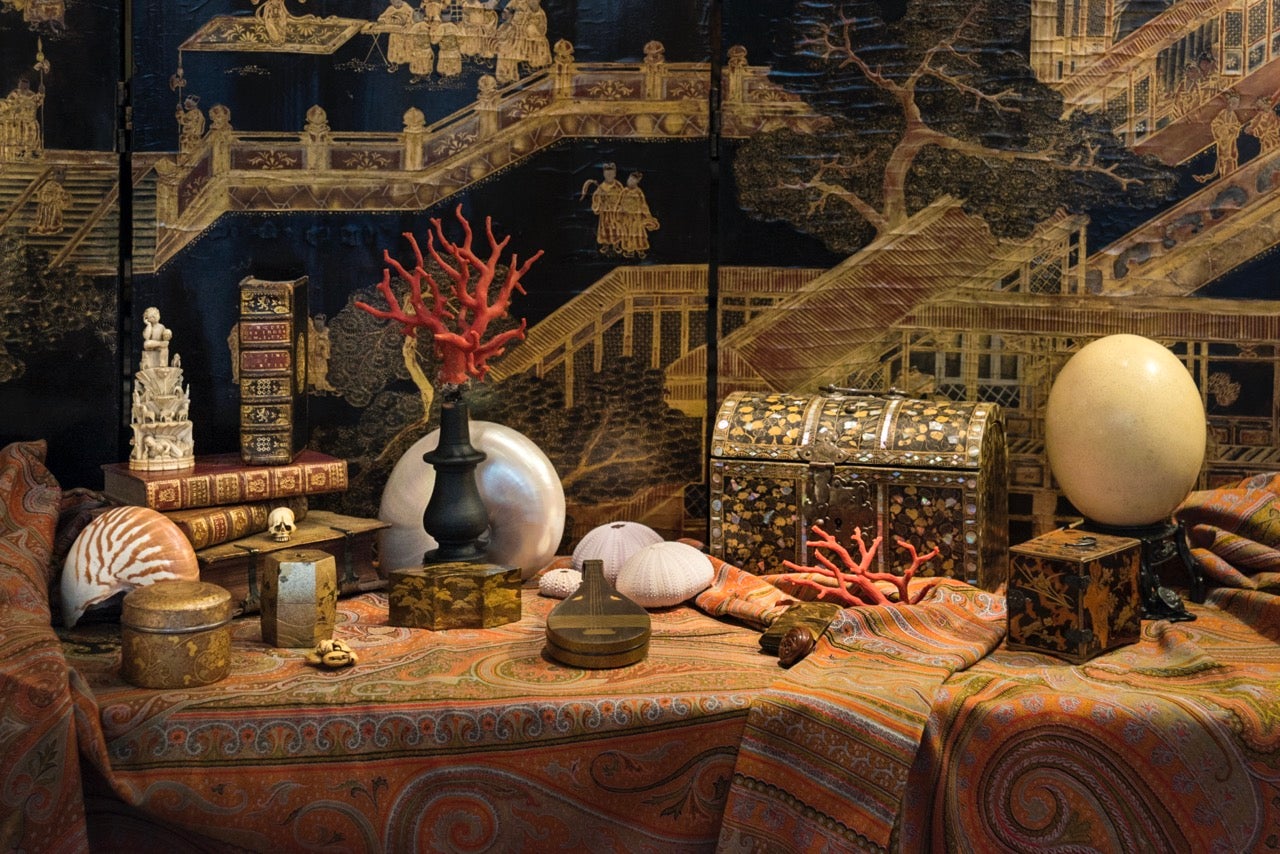
About the Seller
No Reviews Yet
Vetted Seller
These experienced sellers undergo a comprehensive evaluation by our team of in-house experts.
Established in 2013
1stDibs seller since 2023
- ShippingRetrieving quote...Ships From: PARIS, France
- Return PolicyA return for this item may be initiated within 7 days of delivery.
More From This SellerView All
- Japan hares matcha bowlLocated in PARIS, FRMatcha bowl in clay decorated with two hare, partly glazed. A fine contrast between the unglazed foot, which retains the raw color and rough, matt appearance of the clay, and the re...Category
Mid-20th Century Japanese Japonisme Ceramics
MaterialsCeramic, Clay
- Japanese Screen "the Song of Everlasting Sorrow"Located in PARIS, FRSix-panels screen depicting the exit from the city of a Chinese emperor on horseback and his concubine in a luxurious palanquin. It may be a scene illustrating the poem The Song ...Category
Antique Late 17th Century Japanese Paintings and Screens
MaterialsSilk, Wood, Paper
- Japanese Black and Gold Lacquer Kaioke Boxes 'Hokaibako'Located in PARIS, FRTwo big eight-sided kaioke boxes in black lacquer, decorated with mon and maple leaves in golden lacquer. These are usually octagonal boxes containing the painted shells used in ...Category
Antique Late 19th Century Japanese Lacquer
MaterialsLacquer
- Japanese bronze house on stilts incense burnerLocated in PARIS, FRBronze incense burner depicting a house on stilts. The house is slightly stretched so that it case be seen from one side. The roof can be separated from the foundation to insert cand...Category
Antique Mid-19th Century Japanese Japonisme Metalwork
MaterialsBronze
- Pair of Japanese Bronze Grasshopper VasesLocated in PARIS, FRInsects (mushi) occupy an important place in Japanese culture. Hunting for insects is a popular pastime, especially among children. Using plastic nets and cages, they catch cicadas and beetles to observe them. Between 1830 and 1832, Hokusai composed an untitled series of ten large horizontal prints...Category
Antique Late 19th Century Japanese Metalwork
MaterialsBronze
- Japan deer ryoshibako box Showa era Kawachi HisayaLocated in PARIS, FRCedar wooden ryoshibako (or bunko) document box, decorated with deer and crane on the outer lid and bat on the inner lid in takamaki-e lacquer. As a wedding box, these animals are sy...Category
20th Century Japanese Japonisme Lacquer
MaterialsWood, Lacquer
You May Also Like
- Imari Porcelain Flower Pot 19th CenturyLocated in Beuzevillette, FRBeautiful porcelain planter decorated with imari. On this flowerpot, the background is blue, there are reserves in which appear a dragon and a bird surrounded by red flowers. The upp...Category
Antique Late 19th Century Japanese Japonisme Ceramics
MaterialsPorcelain
- Antique Japanese Imari Porcelain Plate #6, Circa 1890'sLocated in New Orleans, LAAntique Japanese Imari Porcelain Plate #6, Circa 1890's. This is the very last plate of a set of 6 that we initially had. *Ple...Category
Antique 1890s Japanese Porcelain
MaterialsPorcelain
- Pair Antique Imari Porcelain Fluted Design Vases, Circa 1880Located in New Orleans, LAPair antique Imari Porcelain fluted design vases, Circa 1880.Category
Antique 19th Century Asian Ceramics
MaterialsPorcelain
- Set of Japanese Imari Contemporary Blue Porcelain Dinner PlatesLocated in Takarazuka, JPSet of six contemporary Japanese Imari porcelain dessert plates in blue underglaze on pure white fine porcelain, characteristic of Arita porcelain. This pattern is called Royal Blue ...Category
21st Century and Contemporary Japanese Meiji Porcelain
MaterialsPorcelain
- Antique 19th Century Japanese "Imari" Porcelain Plate on StandLocated in New Orleans, LAStunning antique 19th century Japanese "Imari" porcelain plate on stand. 18" diameter plate. (21" high on stand).Category
Antique 19th Century Japanese Ceramics
MaterialsPorcelain
- Large Chinese Porcelain Imari Charger Made Qianlong Era Circa 1760Located in Katonah, NYThis large Chinese Imari porcelain charger dates to the Qianlong period of the Qing dynasty, circa 1760. Finely potted with a lovely rich, glassy white glaze, the charger is hand-p...Category
Antique Late 18th Century Chinese Qing Porcelain
MaterialsPorcelain
